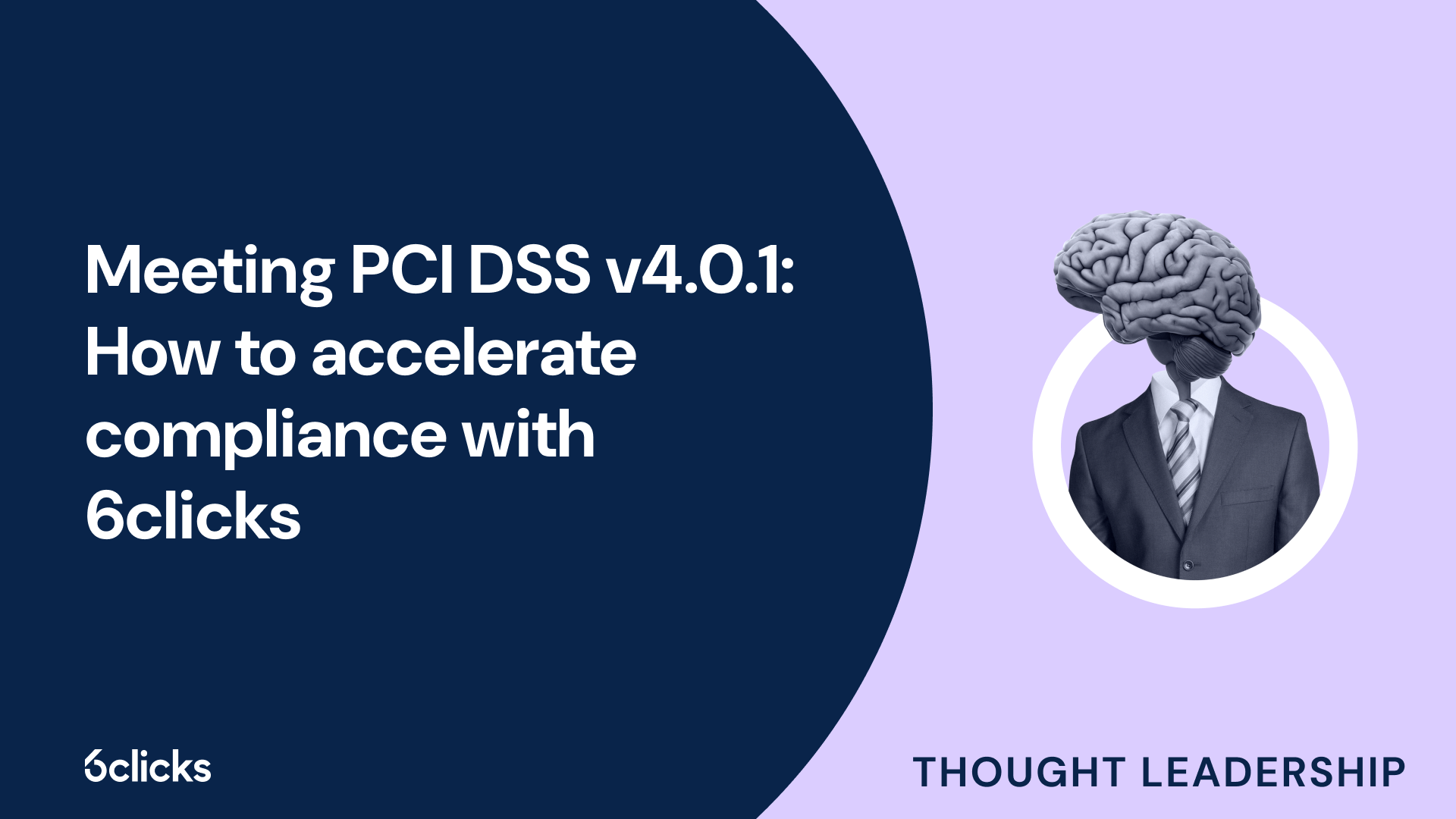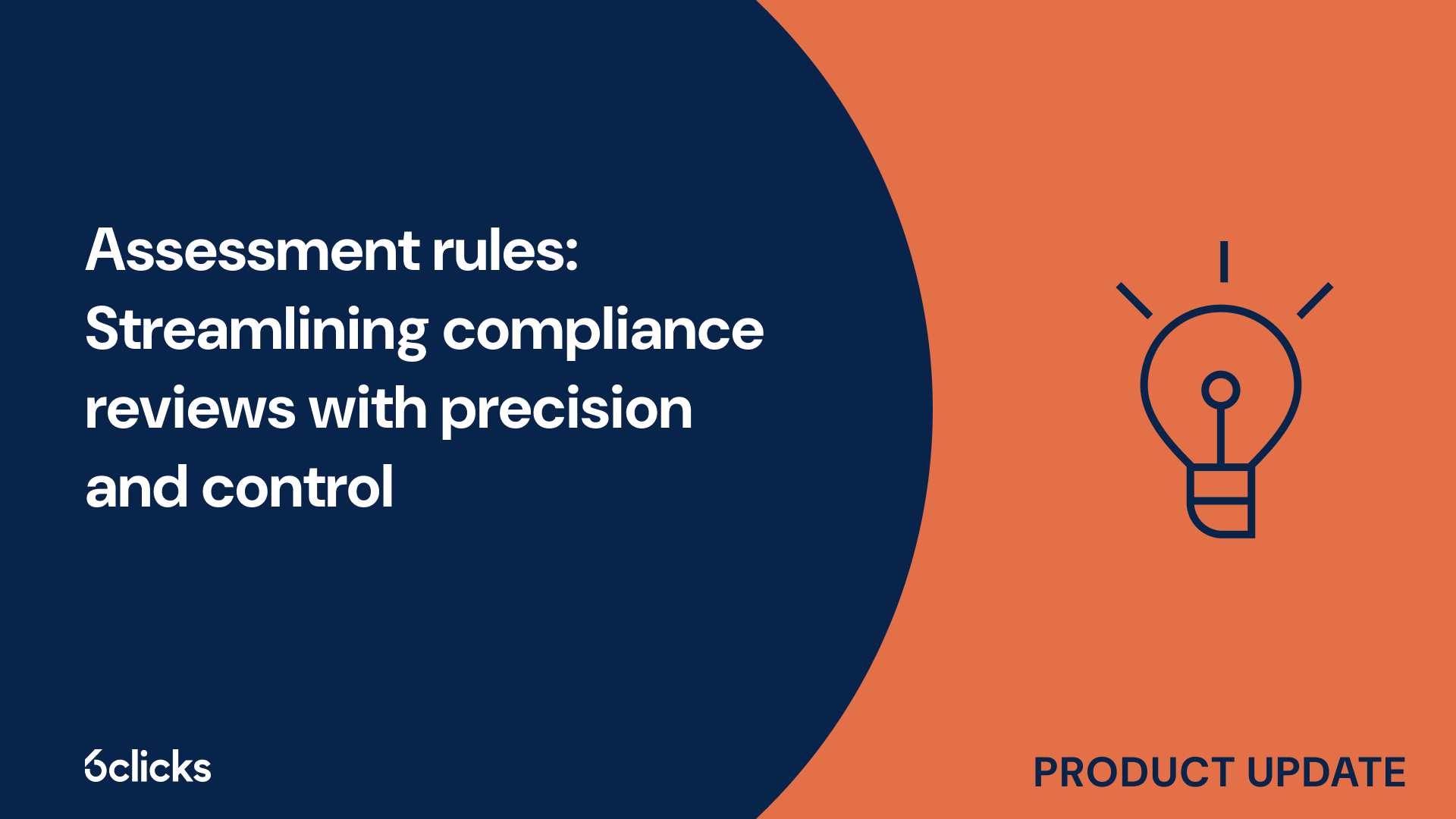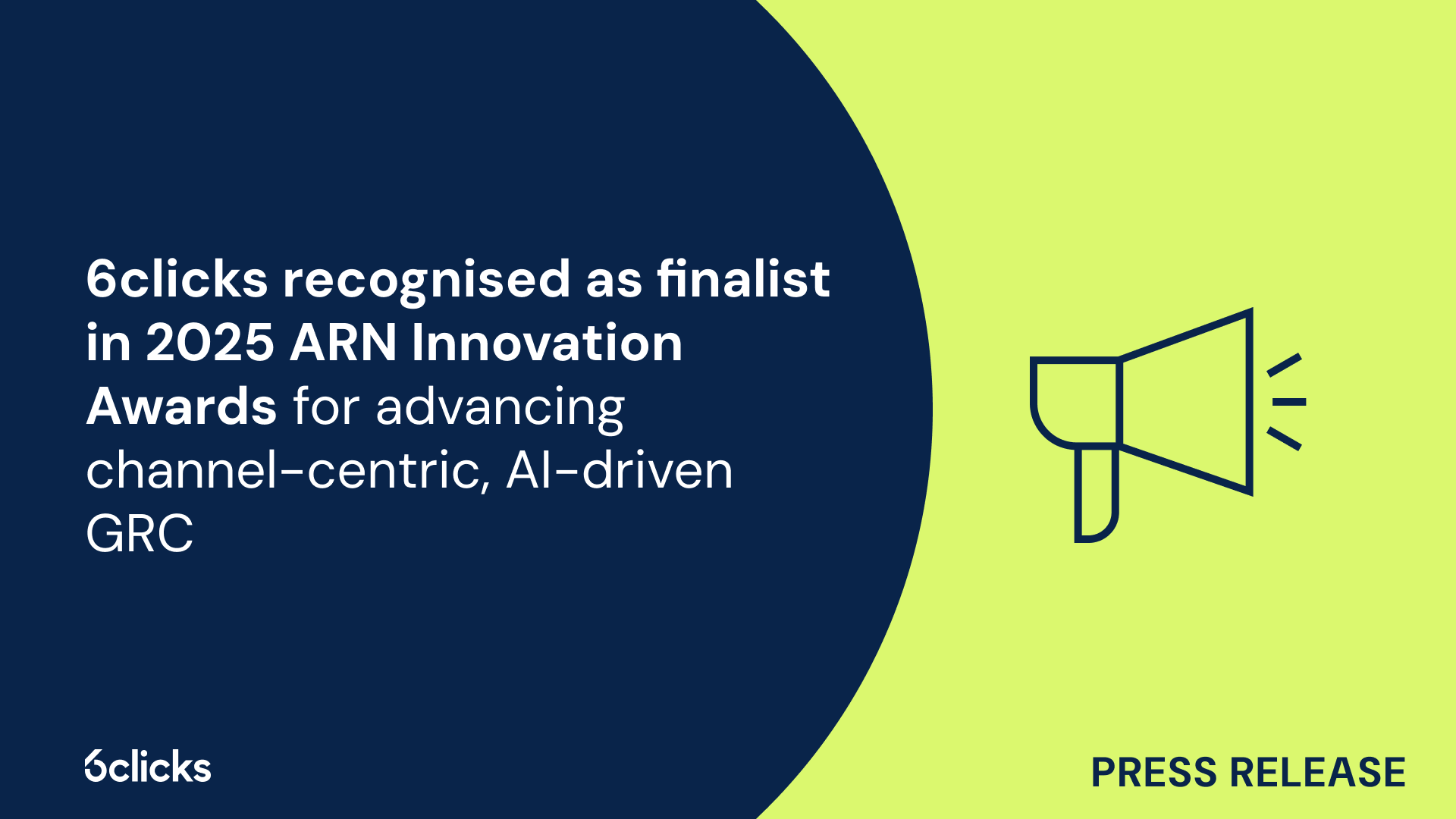The GRC buyer’s guide for 2025: Building resilience with AI-powered, federated solutions
Discover the ultimate GRC buyer's guide for 2025! Uncover how AI-powered, federated solutions transform compliance and security management for industries like government, aerospace, banking, and more. Learn about centralized control, continuous compliance, and advanced cyber GRC capabilities. Download now!
-1.png?width=200&height=249&name=Group%20193%20(1)-1.png)
The GRC buyer’s guide for 2025: Building resilience with AI-powered, federated solutions
What is ISO 27001?
ISO 27001 is an international standard that sets forth the requirements for establishing, implementing, maintaining, and continually improving an Information Security Management System (ISMS) within the organization. The ISMS is a systematic approach to managing sensitive company information and ensuring its confidentiality, integrity, and availability. ISO 27001 takes a risk management approach, helping organizations identify and address security risks, and implement controls and processes to protect against them. It provides a framework for developing and maintaining the necessary security practices, policies, and procedures to safeguard valuable information assets. By achieving ISO 27001 certification, organizations can demonstrate to customers, stakeholders, and regulators their commitment to information security and their dedication to protecting sensitive information. The certification process involves a series of steps, including risk assessment, implementation of security controls, internal audits, and a certification audit by an external certification body.
Benefits of ISO 27001 certification
ISO 27001 certification offers a range of benefits for organizations seeking to enhance their information security practices and gain trust and assurance from stakeholders. One of the key advantages of ISO 27001 certification is the external audit process. This means that an independent certification body verifies the organization's compliance with the ISO 27001 standard, providing a level of trust and assurance to stakeholders.
By achieving ISO 27001 certification, organizations demonstrate their commitment to safeguarding sensitive information and managing security risks effectively. This can result in improved trust from customers, partners, and other stakeholders who rely on the organization's ability to protect their data. It also demonstrates a proactive approach to identifying and addressing information security threats.
ISO 27001 certification involves a comprehensive framework for establishing, implementing, maintaining and continually improving an information security management system. This not only helps organizations to identify and address security risks but also promotes a culture of information security awareness and responsibility within the organization. As a result, ISO 27001 certification can lead to improved security practices, reduced security incidents, and better protection of valuable assets, including intellectual property.
Requirements
To achieve ISO 27001 certification, organizations need to fulfill a set of requirements outlined in the ISO/IEC 27001 standard. These requirements cover various aspects of information security management, including the development and implementation of security policies and procedures, risk assessment and treatment, security controls, and ongoing monitoring and improvement. The certification process begins with the establishment of an information security management system (ISMS) that aligns with the ISO 27001 standard. This involves conducting internal audits, risk assessments, and implementing security controls based on the identified security risks. The organization must also develop a risk treatment plan, addressing any identified vulnerabilities and threats.
Once the ISMS is established, the organization can proceed with the certification audit. This involves an assessment by an external certification body to determine if the ISMS meets the requirements of the ISO 27001 standard. The certification process includes a review of documentation, interviews with employees, and an evaluation of the security controls and practices implemented. If the organization successfully meets all the requirements, it is awarded ISO 27001 certification. It's important to note that certification is not a one-time event; it requires ongoing compliance with the ISO 27001 standard. Regular surveillance audits are conducted by the certification body to ensure that the organization continues to adhere to the requirements and maintains the security of its information assets. By meeting the requirements for ISO 27001 certification, organizations can demonstrate their commitment to information security and instill confidence in stakeholders regarding the protection of sensitive information.
Security management system (SMS)
A security management system (SMS) is a crucial component for organizations seeking ISO 27001 certification. It plays a vital role in creating a strong security posture, implementing secure coding practices, and enabling multi-factor authentication (MFA).
Firstly, the SMS facilitates the development of a robust security posture. By leveraging this system, organizations can identify and assess potential security risks and vulnerabilities. Through regular risk assessments and analysis, they can implement appropriate controls and measures to mitigate these risks and enhance overall security.
Secondly, the SMS enables organizations to incorporate secure coding practices. This involves implementing stringent coding standards and guidelines, conducting regular code reviews, and promoting secure coding practices among developers. By embedding security at the code level, organizations can prevent common vulnerabilities and strengthen the overall security of their applications and systems.
Lastly, the SMS supports the implementation of multi-factor authentication (MFA). MFA adds an additional layer of security beyond just passwords, requiring users to provide multiple forms of identification to access systems and sensitive information. By employing MFA, organizations can significantly reduce the risk of unauthorized access and protect valuable data.
In addition to these prominent features, the SMS also emphasizes the importance of conducting security training for all employees and implementing processes to monitor and record information security risks. This ensures that all staff members are aware of their responsibilities in safeguarding information and helps maintain a proactive approach to identifying and managing security risks.
Risk assessment and treatment plan
One of the crucial steps in obtaining ISO 27001 certification is conducting a comprehensive risk assessment and creating a risk treatment plan. This process enables organizations to identify vulnerabilities, prioritize compliance tasks, and implement necessary controls to mitigate potential security risks.
A risk assessment involves evaluating the likelihood and impact of various security threats and vulnerabilities. This assessment can include factors such as the organization's business processes, technology infrastructure, and regulatory requirements. By conducting a thorough analysis, organizations can identify areas where they are most vulnerable to security breaches, data leaks, or other potential security incidents.
Once vulnerabilities are identified, the next step is to create a risk treatment plan. This plan outlines the necessary measures and controls to address the identified risks. The risk treatment plan should consider ISO 27001 compliant controls, which are specific security measures designed to protect information assets and ensure compliance with the standard. These controls can include access controls, encryption, incident response procedures, security awareness training, and many others.
The importance of a risk assessment in the ISO 27001 certification process cannot be overstated. It helps organizations prioritize compliance tasks by focusing efforts on areas where risks are high, ensuring resources are allocated effectively. Moreover, conducting a risk assessment allows organizations to proactively identify and address vulnerabilities, reducing the likelihood of security incidents and enhancing overall information security.
Security policies and procedures
Implementing robust security policies and procedures in accordance with ISO 27001 is crucial for organizations to ensure the protection of their valuable information and data. These policies and procedures serve as a framework for managing security risks, helping organizations establish clear guidelines and protocols to follow.
By implementing strong security policies, organizations can outline the expected behavior and responsibilities of employees regarding information protection. These policies address key areas such as data classification, access controls, incident response, and physical security measures, ensuring that all aspects of information security are adequately addressed.
Furthermore, establishing clear security procedures is vital for organizations to minimize the risk of security breaches and unauthorized access to sensitive information. Secure coding practices, for instance, can help prevent vulnerabilities in software applications and systems, reducing the potential for exploitation by malicious actors. Conducting regular security training sessions and enabling multi-factor authentication (MFA) are also essential components of a comprehensive security program.
By adhering to ISO 27001, organizations can enhance their security posture and demonstrate their commitment to protecting sensitive information. Through proper implementation of security policies and procedures, organizations can mitigate risks, safeguard their assets, and maintain the trust of their stakeholders.
Implementation plan
Implementing ISO 27001 certification requires a well-defined and organized implementation plan to ensure successful adoption of the standard. The plan should include clear goals, deadlines, and ROI objectives to guide the organization throughout the process.
First and foremost, it is crucial for the organization to familiarize its team with the ISO 27001 standards and conduct a thorough gap analysis to identify existing security practices and potential areas for improvement. This step helps establish a baseline and create a roadmap for implementing the necessary controls and measures.
To accelerate the implementation process, organizations can consider leveraging pre-configured technology solutions such as ISMS.online. These solutions provide a head start by offering templates, toolkits, and frameworks that align with ISO 27001 requirements, easing the implementation burden.
Breaking down the implementation work into manageable chunks is essential for maintaining momentum and ensuring a smooth transition. By setting realistic milestones and celebrating small wins along the way, organizations can keep motivation high and demonstrate progress to stakeholders.
Ultimately, while the time required to achieve ISO 27001 certification may vary depending on the organization's size and complexity, a well-planned implementation process guided by clear goals and deadlines can streamline the journey towards becoming certified. This not only enhances the organization's security posture but also demonstrates a commitment to protecting valuable assets and meeting industry best practices.
Annex a controls
In the context of ISO 27001 certification, Annex A controls refer to the set of security controls outlined in Annex A of the standard. These controls cover various aspects of information security and are an integral part of an organization's Information Security Management System (ISMS).
The controls outlined in Annex A are designed to address specific security risks and vulnerabilities faced by organizations. They provide a systematic approach to managing information security and contribute to the overall security posture of an organization.
One important control is access control, which ensures that only authorized individuals have access to sensitive information. It includes measures such as user authentication, password management, and access rights management. By implementing access control measures, organizations can protect their valuable data from unauthorized access and ensure confidentiality, integrity, and availability.
Asset management is another critical control outlined in Annex A. It involves identifying and classifying information assets, determining their value, and putting measures in place to protect them. This control helps organizations understand their information assets, assess risks, and implement appropriate security measures to safeguard them.
Cryptography is yet another essential control. It involves the use of encryption and cryptographic mechanisms to protect information during storage, transmission, and processing. By encrypting sensitive data, organizations can prevent unauthorized access and ensure the confidentiality and integrity of their information.
Security objectives and practices
To achieve ISO 27001 certification, organizations need to implement key security objectives and practices that demonstrate their commitment to information security. One crucial objective is to establish a strong security posture that protects sensitive data from unauthorized access and ensures its confidentiality, integrity, and availability. This can be achieved through various security practices.
Firstly, organizations should prioritize security training to educate employees about their roles and responsibilities regarding information security. Training programs can include topics such as identifying and reporting security threats, handling incidents, and following secure coding practices. By enhancing employees' knowledge and awareness, organizations can create a culture of security throughout the organization.
Implementing secure coding practices is another essential measure. This includes guidelines and standards for developing secure software and applications, reducing the likelihood of vulnerabilities and exploits. By following best practices for coding, organizations can minimize the risk of security breaches and protect sensitive information.
Enabling multi-factor authentication (MFA) adds an extra layer of security to user authentication processes. By requiring multiple forms of verification, such as a password and a unique code sent to a mobile device, organizations can significantly reduce the risk of unauthorized access to their systems and data.
Maintaining a robust security posture involves continuously monitoring, assessing, and improving security controls. Regularly conducting risk assessments, internal audits, and security incident management helps identify vulnerabilities and weaknesses, enabling organizations to take proactive steps to mitigate risks and enhance their security measures.
By focusing on these security objectives and practices, organizations can establish a strong foundation for ISO 27001 certification and demonstrate their commitment to maintaining a high level of information security.
Certification process overview
The certification process for ISO 27001 can vary depending on the size and complexity of the organization, as well as its existing information security management practices. Generally, the process starts with the organization conducting an initial audit and risk assessment to identify security risks, assets, and vulnerabilities. Based on the findings, the organization then develops and implements security controls and policies to mitigate these risks. This may involve establishing a risk treatment plan, documenting security procedures, and aligning business processes with the ISO 27001 standard.
Once the implementation phase is complete, the organization undergoes a certification audit conducted by an external certification body. This involves an in-depth evaluation of the organization's security practices, risk management, and compliance with ISO 27001 requirements. The certification body assesses the implementation of security controls, reviews documentation and evidence, performs interviews, and conducts site visits as necessary. Any nonconformities identified during the audit must be addressed through corrective actions.
After successful completion of the certification audit, the organization is awarded ISO 27001 certification. However, this is not the end of the journey. To maintain certification, the organization must undergo annual surveillance audits to ensure continued compliance with the standard. These audits focus on monitoring the effectiveness of the organization's security program, verifying ongoing implementation of security controls, and identifying any areas for improvement. The certification process requires commitment, dedication, and ongoing efforts to achieve and maintain ISO 27001 certification.
Determining the scope of certification
Determining the scope of certification is a critical step in the ISO 27001 certification process. The scope defines the boundaries and extent of the certification, ensuring that the certification audit focuses on the relevant areas of an organization's information security management system (ISMS).
When determining the scope of certification, several factors need to be considered. First and foremost, the organization's security objectives should be taken into account. These objectives outline the desired outcomes of the ISMS and guide the selection of controls and processes to be included in the scope.
Additionally, the organization's business processes play a crucial role in scoping. The scope should encompass all the processes that are relevant to the management of information security risks. This ensures that the certification covers the areas where sensitive information is handled and protected.
Furthermore, the risk landscape of the organization must be carefully evaluated. This involves identifying and assessing the security risks and threats that the organization faces. The scope should include the controls and measures necessary to address these risks effectively.
Scoping is essential because it ensures that the certification process is aligned with the organization's specific needs and objectives. By defining the boundaries and extent of the certification, it avoids unnecessary costs and efforts by focusing on the areas of highest importance. It also provides clarity to internal teams and external auditors on what is included within the certification scope. Overall, determining the scope of certification is a crucial step in achieving ISO 27001 certification and improving an organization's information security management practices.
Internal auditing and documentation review
Internal audits and documentation reviews are essential components of the ISO 27001 certification process. They play a crucial role in evaluating the effectiveness of an organization's Information Security Management System (ISMS) and ensuring compliance with the standard's requirements.
The purpose of conducting internal audits is to assess the organization's security management system, identify areas of non-compliance or improvement, and provide recommendations for corrective actions. The objective is to ensure that the ISMS is functioning as intended and effectively addressing security risks and threats.
Internal audits involve a systematic and objective examination of the organization's security controls, processes, and documentation. The process typically includes reviewing security policies, procedures, risk assessments, and other relevant documentation. The auditor may also sample evidence and conduct interviews to validate the implementation and effectiveness of controls.
The benefits of conducting internal audits and documentation reviews are numerous. They help organizations identify vulnerabilities and weaknesses in their security practices, improve their security posture, and ensure compliance with ISO 27001 requirements. Internal audits also help organizations measure the effectiveness of their security program, provide evidence of their commitment to information security, and mitigate security risks.
To complete an internal audit, the following steps are generally involved:
- Planning and preparation: Define the audit objectives and scope, develop an audit plan, and gather relevant documentation.
- Documentation review: Assess the adequacy and effectiveness of security policies, procedures, and documentation.
- Evidence sampling: Collect and review evidence to verify the implementation and effectiveness of controls.
- Findings analysis: Compare audit findings against ISO 27001 requirements and identify areas of non-compliance or improvement.
- Corrective actions and improvements: Develop recommendations for corrective actions and improvements to address identified deficiencies.
- Follow-up and monitoring: Verify the implementation of corrective actions and monitor their effectiveness over time.
Certification body audit and evaluation
The certification body audit and evaluation is a crucial step in the process of obtaining ISO 27001 certification. This audit is conducted by an external certification body to ensure that the organization's Information Security Management System (ISMS) complies with the requirements of the ISO 27001 standard.
During the audit, the certification body will review the organization's ISMS to assess its compliance with the ISO 27001 standard and its ability to effectively manage information security risks. This includes a thorough evaluation of the organization's security controls, policies, processes, and procedures.
One important aspect of the audit is the review of compliance with Annex A of the ISO 27001 standard. Annex A provides a comprehensive list of security controls that organizations can implement to protect their information assets. The certification body will examine how well the organization has implemented these controls and assess their effectiveness in mitigating security risks.
The steps involved in the certification body audit process generally include:
- Planning: The certification body will define the audit objectives, scope, and schedule in collaboration with the organization.
- On-site assessment: The certification body will visit the organization's premises to conduct interviews, observe processes, and review documentation.
- Document review: The certification body will assess the organization's ISMS documentation, including policies, procedures, and risk assessments.
- Evidence sampling: The certification body will collect and review evidence to verify the implementation and effectiveness of security controls.
- Gap analysis: The certification body will compare the organization's ISMS against the requirements of the ISO 27001 standard, identifying any gaps or non-compliance.
- Reporting: The certification body will provide a detailed report of the audit findings, including any non-conformities or areas for improvement.
- Corrective actions: The organization will need to address any identified non-conformities and implement corrective actions within a specified timeframe.
- Certification decision: Based on the audit findings and the effectiveness of the corrective actions, the certification body will make a decision to grant or withhold ISO 27001 certification.
During the evaluation, the certification body will be looking for evidence that the organization has a robust ISMS in place, including a clear information security policy, well-defined roles and responsibilities, effective risk management processes, and appropriate security controls in place. The organization will need to demonstrate their commitment to continuous improvement and compliance with ISO 27001 requirements.
Timeframe for ISO 27001 certification
The timeframe for obtaining ISO 27001 certification can vary depending on the unique characteristics and needs of each business. On average, the certification process typically takes around one year. However, this timeline can be shorter or longer based on several factors.
For small businesses with simpler operations and fewer resources, achieving ISO 27001 certification may take eight months or less. Mid-sized businesses, with more complex processes and larger teams, usually require eight months to a year to complete the certification process. Large corporations, with extensive operations and multiple departments, may take up to 15 months to obtain ISO 27001 certification.
Several factors can influence the duration of the certification process. One crucial factor is the level of organization and prior planning in place. If a business has already established effective security management systems and well-defined security policies, the certification process is likely to be more streamlined.
Additionally, having prior knowledge of the ISO 27001 assessment process and understanding its requirements can expedite the certification timeline. It allows organizations to proactively address any gaps in their security practices, thereby reducing the time spent on corrective actions.
Factors that can affect the timeline of ISO 27001 certification
There are several factors that can impact the timeline of ISO 27001 certification. One key factor is the size of the business. Smaller businesses with simpler operations and fewer resources may be able to achieve certification in a shorter timeframe, typically around eight months or less. Mid-sized businesses, with more complex processes and larger teams, usually require eight months to a year to complete the certification process. On the other hand, large corporations, with extensive operations and multiple departments, may take up to 15 months to obtain ISO 27001 certification.
Another crucial factor is the level of organization and planning already in place within the organization. If a business has already established effective security management systems, well-defined security policies, and documentation, the certification process is likely to be more streamlined. This is because the implementation of ISO 27001 requires businesses to meet certain requirements, including risk assessment and the establishment of security controls. Having these systems and processes in place beforehand can expedite the certification timeline.
Additionally, prior knowledge of the ISO 27001 assessment process and understanding its requirements can also impact the duration of certification. Organizations that are familiar with the assessment process can proactively address any gaps in their security practices, reducing the time spent on corrective actions.







